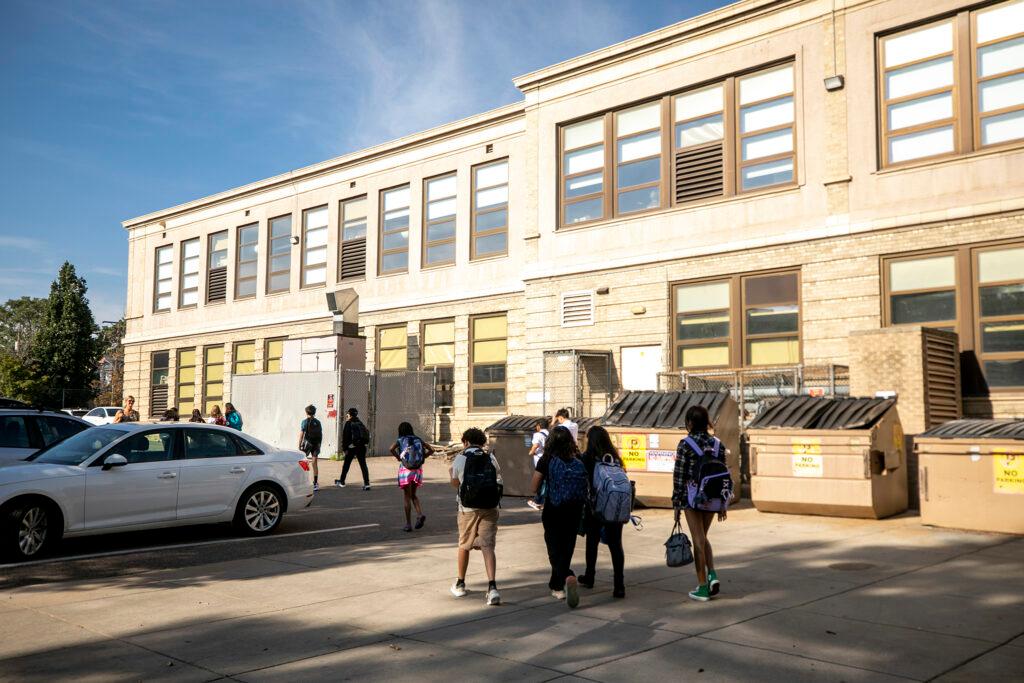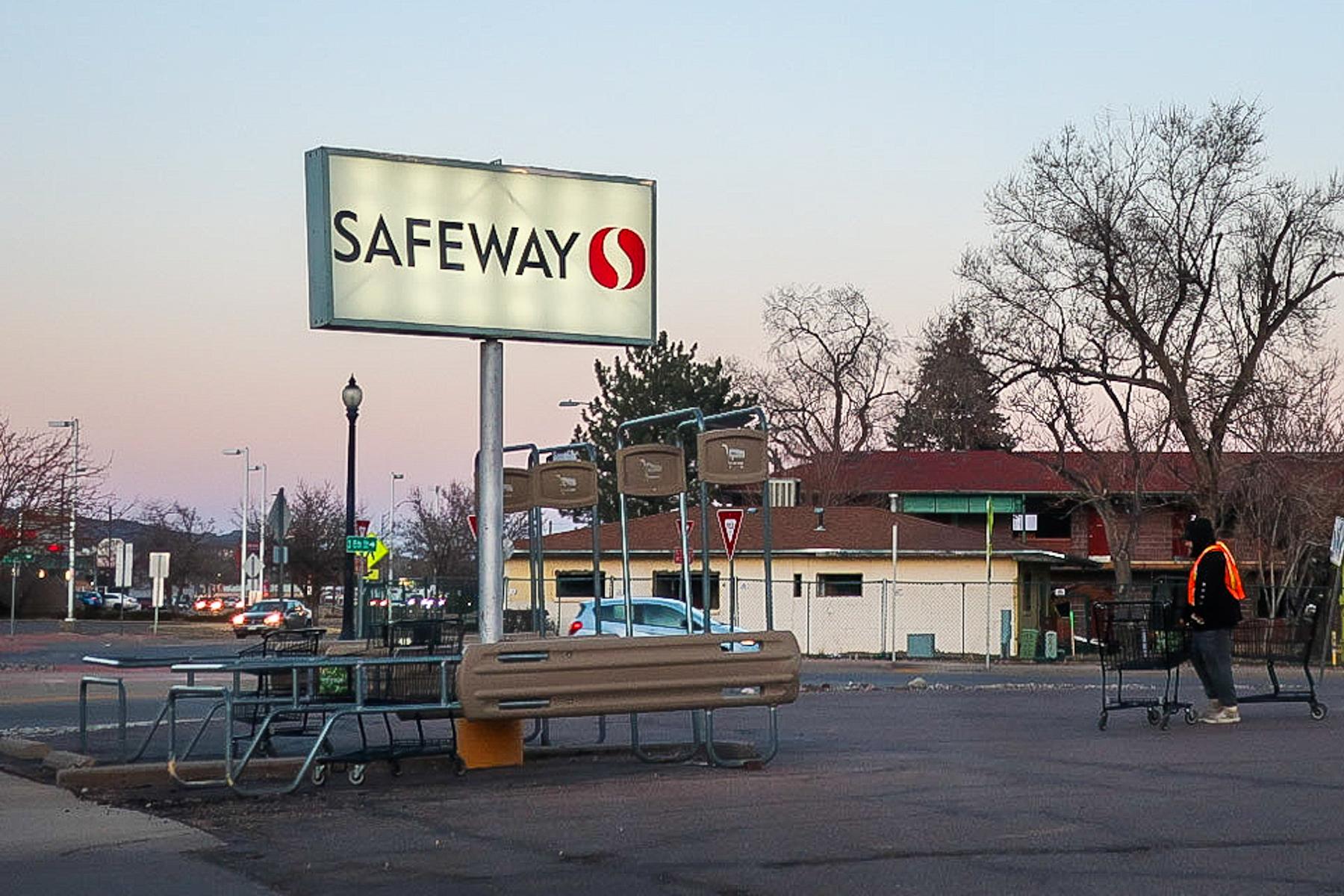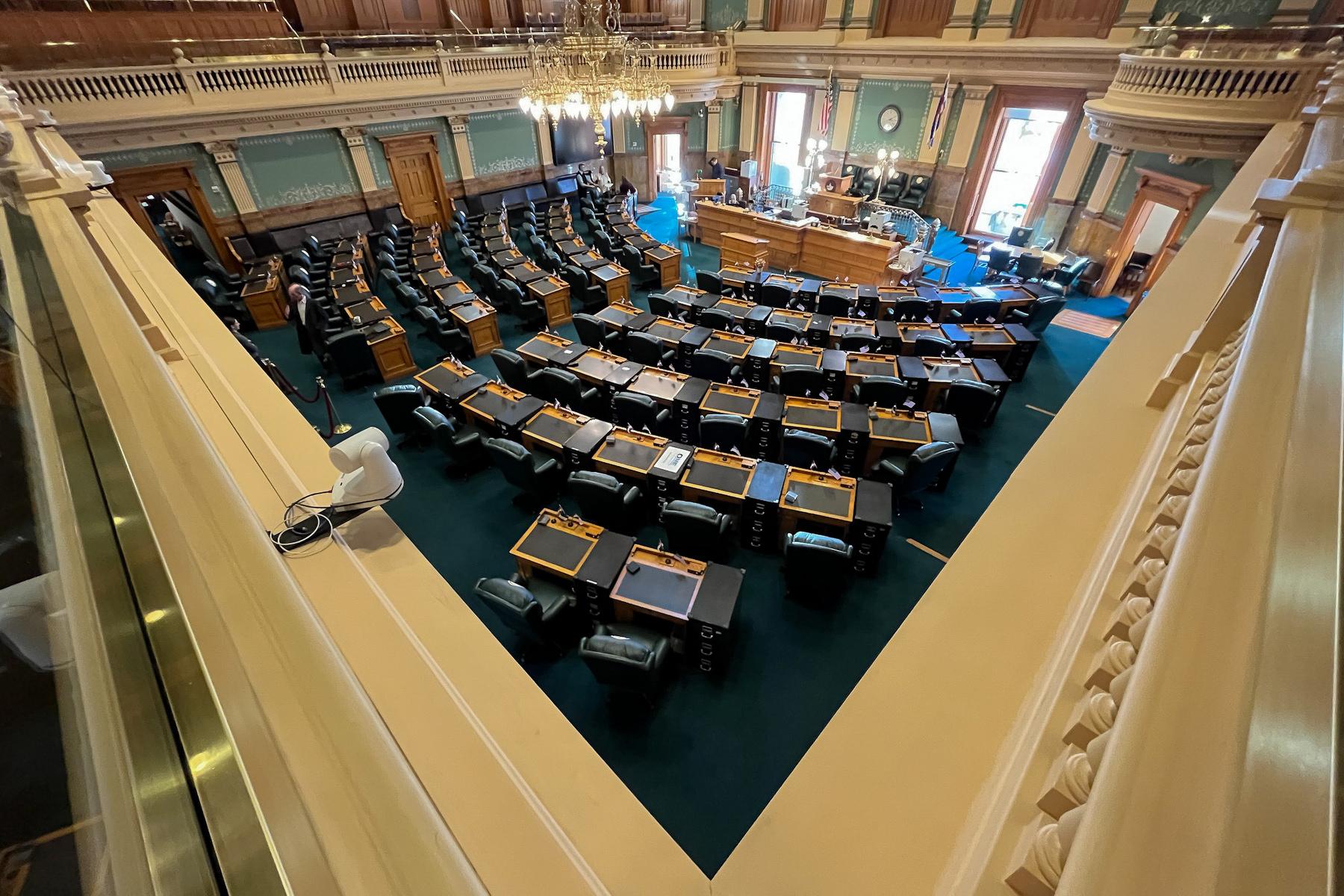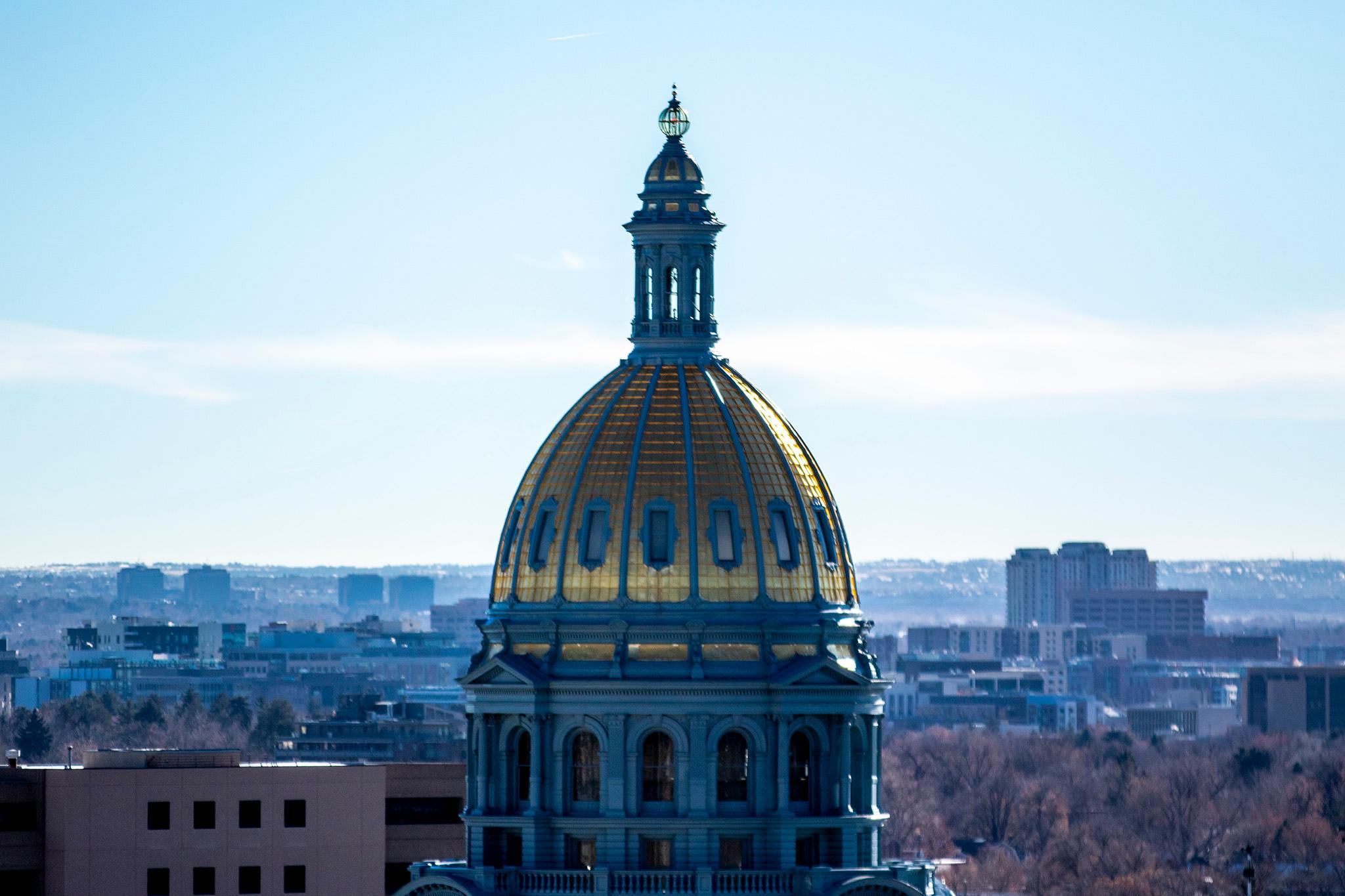
Before you enter Regan Rosburg’s “The Relentless Memorial” you’ll need to take off your shoes. Feel free to get comfortable, show some emotion and get personal with the art.
“The point of this piece is for people to come in and grieve,” Rosburg says.
“Relentless Memorial” stands 12 feet tall and stretches nine feet wide. It’s a tranquil space made of 16 white mylar sheets, and it takes on a topic that typically triggers heated debates.
She hopes to encourage visitors to reflect on "the collapse of our environment." The installation, along with other works exploring climate change and the human impact on the environment, is on display at the University of Denver as part of an art show called “Storm Warning."

“I wanted to put people in the position where they are aware that every single action that they do influences the response of this world that’s around them,” Rosburg says.
The concept nods to similar themes like overconsumption to melancholia. The latter is a topic Rosburg researched while pursuing her master of fine arts degree at Lesley University College of Art and Design in Cambridge, Massachusetts.
The makeshift shrine has a meditative quality found throughout much of the exhibition, curator Jeffrey Keith says.
What A Camel’s Stomach Says About Environmental Impact
“Gastrolith” by Chris Jordan is a digital video that features an abstract-looking object revolving slowly like a globe.
“This is the stomach contents of a camel that eventually died as a result of eating all of these plastic bags and different detritus,” Keith says. “This is something that someone sent to Chris from Dubai.”
In the gallery, the sound of a gamelan gong plays near the projection.
“It really slows us down and gives us the opportunity to discover how horrifying the image is when you start to really think about what you’re looking at,” Keith says.
Then there are more playful pieces to balance out the dense nature of this topic.
“A lot of (climate change art) is so grim and esoteric that it loses you, so I wanted to bring stuff in that was very accessible too,” Keith says.
A Recycled Ransom Note
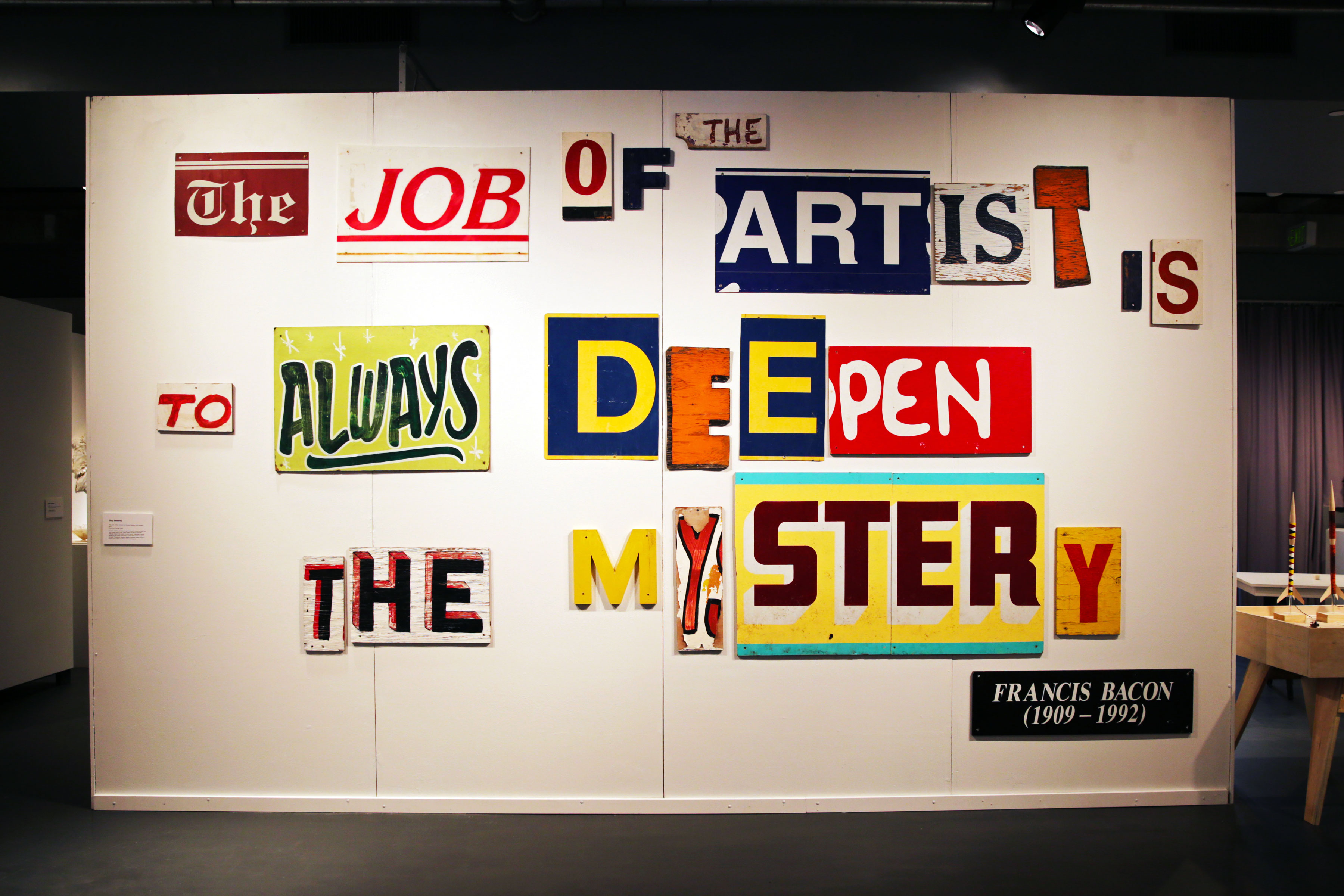
San Antonio artist Gary Sweeney repurposes old signs, cutting them into colorful phrases like this quote from painter Francis Bacon. Sweeney is one of several artists who incorporated recycled and reused objects into their works on display at DU.
His piece, which instantly greets you inside the gallery doors, tries to set the tone by acknowledging the role of artists to reflect on important issues. It’s one of several works on display that incorporates recycled and reused objects.
“If the conversation can be open and less angry, frightened and hysterical, we can actually talk and listen to each other a little bit more,” Keith says.
‘Storm Warning’ runs through April 30, 2017 at the Vicki Myhren Gallery. The University of Denver hosts a symposium that coincides with the exhibition April 13.

